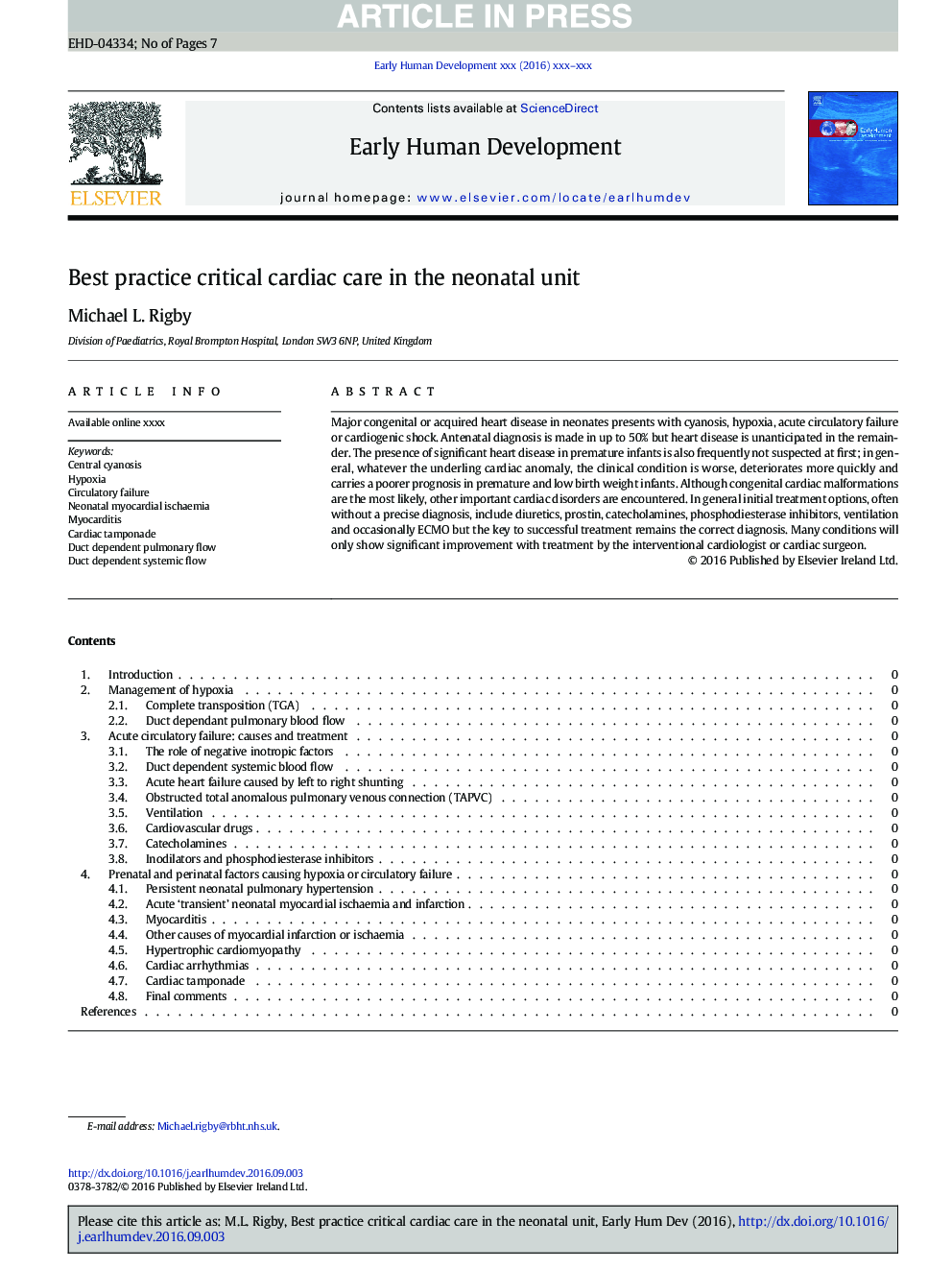| Article ID | Journal | Published Year | Pages | File Type |
|---|---|---|---|---|
| 5689130 | Early Human Development | 2016 | 7 Pages |
Abstract
Major congenital or acquired heart disease in neonates presents with cyanosis, hypoxia, acute circulatory failure or cardiogenic shock. Antenatal diagnosis is made in up to 50% but heart disease is unanticipated in the remainder. The presence of significant heart disease in premature infants is also frequently not suspected at first; in general, whatever the underling cardiac anomaly, the clinical condition is worse, deteriorates more quickly and carries a poorer prognosis in premature and low birth weight infants. Although congenital cardiac malformations are the most likely, other important cardiac disorders are encountered. In general initial treatment options, often without a precise diagnosis, include diuretics, prostin, catecholamines, phosphodiesterase inhibitors, ventilation and occasionally ECMO but the key to successful treatment remains the correct diagnosis. Many conditions will only show significant improvement with treatment by the interventional cardiologist or cardiac surgeon.
Related Topics
Health Sciences
Medicine and Dentistry
Obstetrics, Gynecology and Women's Health
Authors
Michael L. Rigby,
